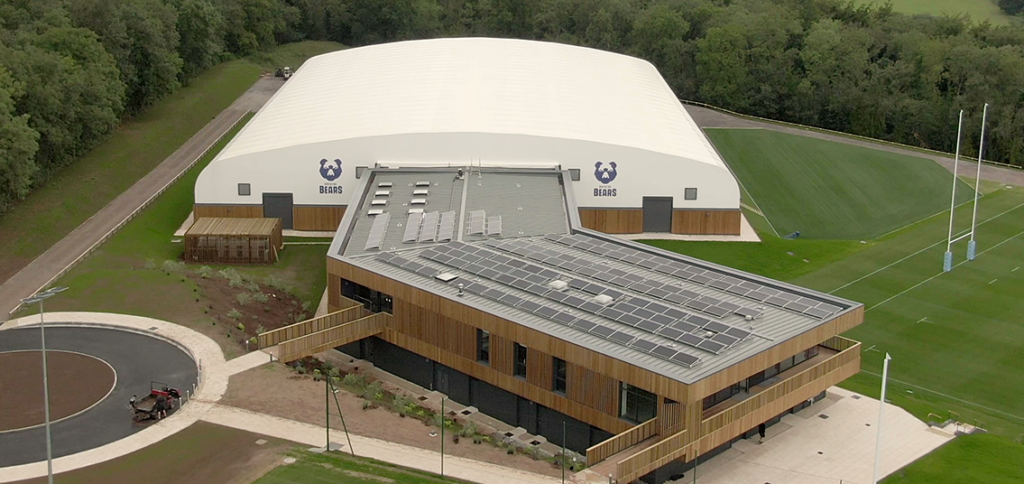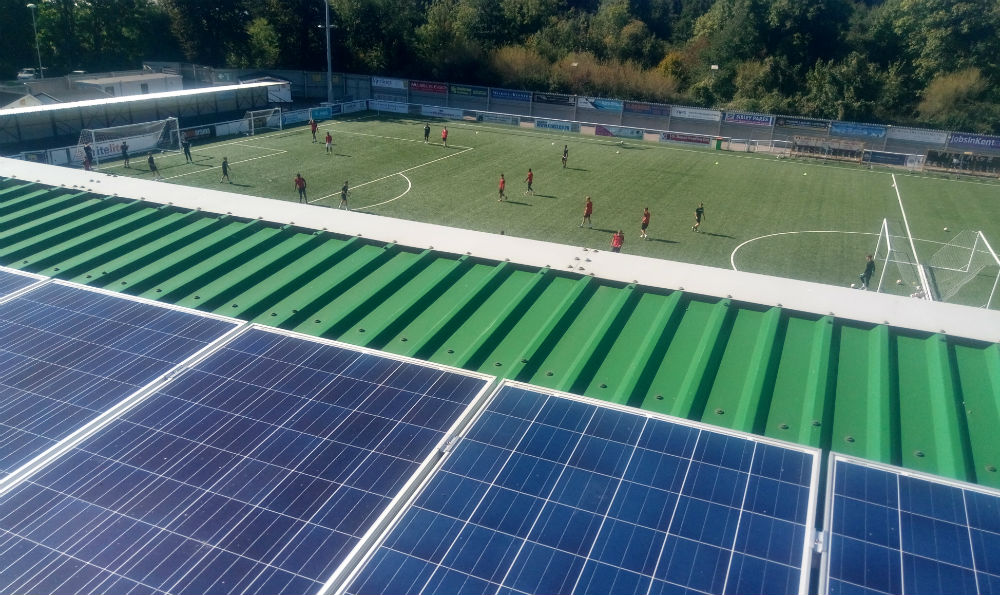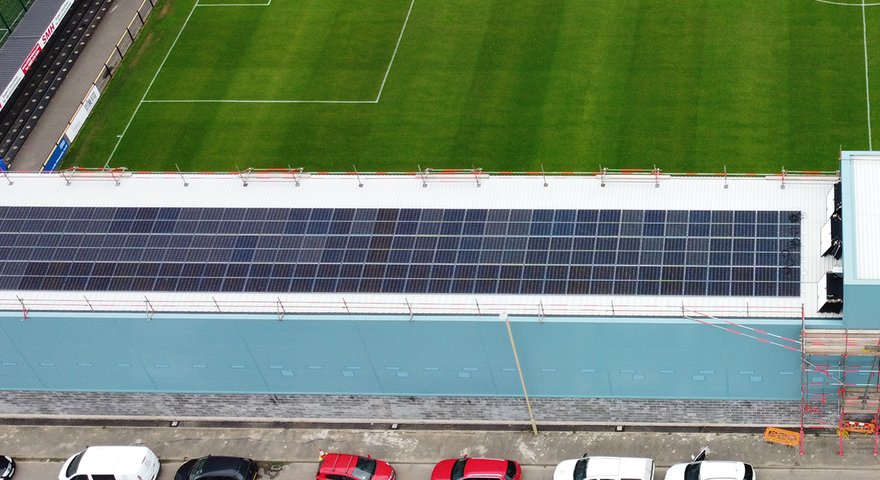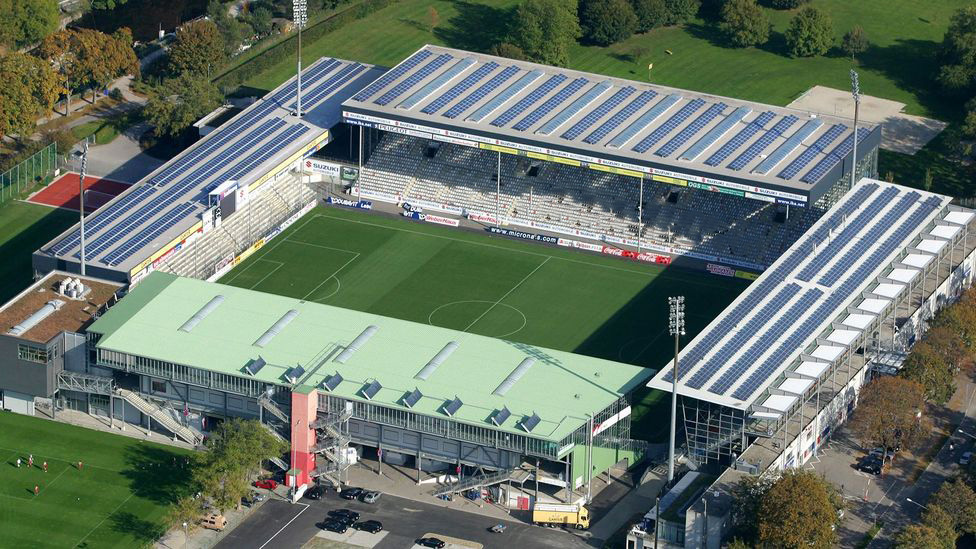In recent years, the United Kingdom has witnessed a remarkable transformation in its approach to renewable energy sources.
One particular area where this transition has been highly visible is in the sporting arena.
Across the nation, sports stadiums are embracing solar power solutions, not just as a means of reducing their carbon footprint, but also as a way to reduce energy costs and engage in sustainable practices.
In this blog, we will delve into how solar power is making strides in the UK’s sports stadiums.
The Green Game-Changer
Sports stadiums have traditionally been associated with energy consumption due to their immense size and the need for lighting, HVAC systems, and audio-visual equipment. However, as the world wakes up to the urgency of climate change, many stadiums are stepping up to become part of the solution rather than the problem.
Reducing Carbon Footprints:
Solar panels are a significant game-changer in the fight against climate change. By harnessing the power of the sun, sports stadiums are significantly reducing their carbon emissions. This shift aligns with the UK’s commitment to achieving net-zero carbon emissions by 2050.
Energy Cost Savings:
The economic benefits of solar installations are hard to ignore. Sports stadiums often have expansive roofs and open spaces that are ideal for solar panels. By generating their own electricity, these stadiums can reduce their reliance on grid power, resulting in substantial cost savings over time.
Solar Innovations in UK Stadia
Several sports stadiums in the United Kingdom have emerged as trailblazers in adopting solar power technology. Here are a few notable examples:

Wimbledon’s Solar Farm:
Wimbledon (above), the iconic tennis tournament, has taken a proactive step toward sustainability. In 2020, they unveiled a solar farm consisting of 2,422 solar panels on an unused piece of land. This installation can generate enough electricity to power 270 homes annually. It not only powers the All England Lawn Tennis Club but also feeds excess energy back into the grid.
Arsenal’s Emirates Stadium:
Arsenal Football Club, one of the Premier League’s elite teams, installed 2,500 solar panels on the roof of the Emirates Stadium. This installation produces enough energy to power 180 homes for a year, reducing their carbon emissions by an estimated 440 tonnes annually.
The Oval’s Solar Brilliance:
London’s iconic cricket ground, The Oval, installed a substantial solar array on its roof, generating approximately 50,000 kWh of clean energy annually. This initiative has not only reduced their carbon footprint but also led to significant savings on their electricity bills.
Challenges and Future Prospects
While the adoption of solar power in sports stadiums is a step in the right direction, several challenges need to be addressed to further accelerate this trend:
Initial Investment:
The upfront cost of installing solar panels can be substantial, which may deter some stadiums from making the transition. However, Government incentives and decreasing solar panel costs are making this investment more attractive. Plus with Solar In Sport, we offer a PPA arrangement which means funds the deal!
Space Constraints:
Not all stadiums have the expansive rooftops or open areas required for solar installations. In such cases, innovative solutions like solar canopies or partnerships with nearby solar farms can be explored.
Intermittent Energy Generation:
Solar power generation is dependent on weather conditions, which can be inconsistent in the UK. Batteries and energy storage solutions can mitigate this issue, allowing stadiums to store excess energy for use during cloudy days or at night.
Heading in the right direction.
The growing adoption of solar power in sports stadiums across the United Kingdom is a testament to the global shift toward renewable energy sources. Not only are these stadiums reducing their carbon footprint and contributing to the fight against climate change, but they are also setting an example for their fans and communities.
As solar technology continues to advance and become more affordable, we can expect even more stadiums to harness the power of the sun.
The future of sports is looking greener and more sustainable, and this transition is not just a win for the environment but also for the sports industry’s bottom line.
By embracing solar power, UK sports stadiums are proving that a sustainable future is not only achievable but also economically advantageous.
Is it time for you to look into solar at your stadium?
Remember, the Solar In Sport team are here for you every step of your solar journey.
Get in touch with our team today on (+44) 01782 953719.
Or why not fill in our simple contact form.
We look forward to helping you on your solar journey!




